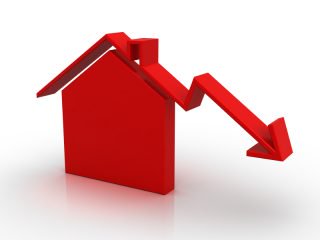ONS figures show changing face of UK housing market
Interesting data released by the Office of National Statistics (ONS) shows the economic downturn has shifted the demographic of home ownership in Britain.
Results from the latest economic review report from the ONS show the proportion of households who privately rent their home increased sharply following the downturn.
Surge
Those renting from a private landlord increased from 6% to 11% in the twenty years from 1988 to 2008. However, there was then a jump to 16% in the six years to 2014.
In contrast, the proportion of households owning their property increased slowly from 56% to 71% between 1981 and 2008. This figure then fell to 67% by 2014.
The fall in homeownership, coupled with the rise in private renting, reversed a three-decade trend of increasing numbers of home owners. The ONS report shows that this partly reflects tighter mortgage lending and the performance of house prices during the recovery period.
What’s more, the report shows that these features have assisted in cutting the fraction of households owning their own home with a mortgage. This has fallen from 43% in 1991 to only 31% in 2014.
Trends
While trends in homeownership have begun to reverse, the impact on specific groups of the population have been greater. The number of people choosing to stay living with their parents for longer has increased substantially, with patterns in tenure amongst independent property owners also altering.
Numbers of young people living in privately rented accommodation have risen massively both since the economic downturn and in the last decades. In 1987, only 9% of people aged between 26-30 rented. However, this figure increased to 19% by 1997, 30% by 2007 and 39% in 2014.
Nearly one-third of those aged between 31-35 privately rented accommodation in 2014, with one in five people aged between 37 and 41 renting.

ONS figures show changing face of UK housing market
Fall in ownership
A recent rise in private rentals has been driven by the sharp fall in home ownership and the lower number of mortgages being taken out. Between 1977 and 1987, individuals living in a property with a mortgage increased. However, in the next two decades, the proportion of young people of these properties decreased, but the mortgage owning population between 45 and retirement age increased. This reflects that many purchasers between 1977-87 were youngsters who had now matured.
Differences recorded between 2007 and 2014 are alarming. The report highlights the prevalence of mortgagors is presently lower than in 2007 for every age group below 55.
It shows that the increase of private rentals has been particularly noticeable amongst 21-25 year olds. Proportions of renters in this age group increased from less than 20% in the 1980’s to over 60% in 2014. Smaller percentages of these groups live in mortgaged homes than in any time since records began.
Rent by regions
In London, rent accounted for 34% of disposable income for renters during 2014, in comparison to just 15% for those in the North East. The South East and West saw ratios of renters above 25%, with the East Midlands, Yorkshire and the Humber and Northern Ireland below 20%.
According to the report, the figures reflect movements in the prices of rent across regions. Rents in the capital and South East have become unaffordable, while those in the North are much cheaper.



